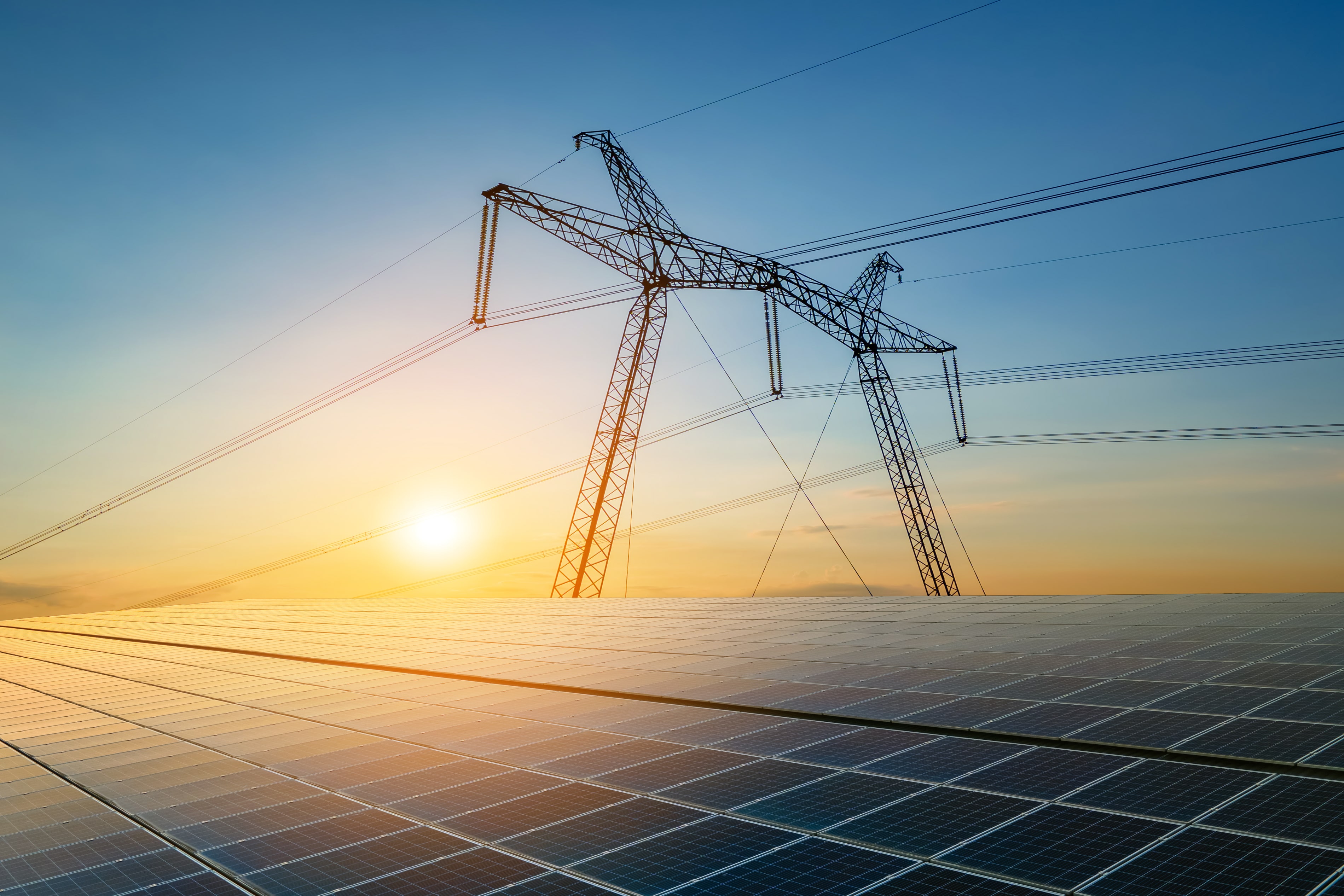Our Vision for the Power System
Why start your third climate tech company and your second in power grid flexibility? Why again venture into this wonderful but oh so difficult space? As Jason Calacanis once blurted out at the end of an interview: “So you are a masochist!”. Granted, it is tough to scale innovative software ventures in this highly regulated and slowly moving part of the energy market. Yet, the need for what we are building at Beebop has never been clearer and the time has never been better. #herewegoagain
The Power System meets its “Cloud Moment”
Our energy system stands at a crossroads and we believe it is about to go through the same revolution as cloud computing over the past two decades. And it has to. If it doesn’t, energy prices will go through the roof, growth in renewables will stall and the energy transition will stumble.
As with cloud computing years ago, this revolution too calls for massive new infrastructure. And where the cloud revolution led to upgraded communication networks and server infrastructure worldwide, our energy system will need stronger electricity grid infrastructure, large batteries and coupled renewable energy plants.
New hardware aside, the grid will also require a secret ingredient that has powered the cloud revolution: virtualization software. And Beebop was founded to build just that: the smart virtualization middleware of our future energy system.
Today, no one running an application on the internet knows which computer is running what parts of your application and where. That information is abstracted away by sophisticated middleware like CDNs that optimize data flows, memory and processing power across servers around the globe. Though invisible to most users, this virtualization middleware is essential to keep our digital world humming.
If we want our future renewable energy system humming and brimming with affordable and reliable energy for all, we have to invest in virtualization of power urgently. And that means both developing new software systems and adapting market design and system operations.
But let’s backtrack for a moment…why the rush?
Grids and the energy transition: a world of pain
In case you haven’t noticed: our power grids are in serious distress. Their tell-tale signs are seen all over the world and range from energy imbalances and price volatility in Europe, duck curves in California, inertia problems in Australia to congested grids in the Netherlands. But the underlying pathology is nearly always the same: a power system designed for centralized and stable fossil fuel-based energy generation is cracking at the seams under the rapid increase of decentralized and intermittent renewable energy generation. New forms of electricity consumption only add to this pain by e.g. electric vehicles causing unmanageable peaks by charging all at the same time.
If we don’t want power grids to be the hidden bottleneck of the energy transition, we have to rapidly reinforce our grid infrastructure. But, even if we do that as quickly as possible, it won’t be fast enough. Therefore, and to keep the system affordable, we need a paradigm shift in the way we consume power. That is, we will have to consume electricity only when and where it is available (when the wind is blowing, the sun is shining and there are no congestions on the power lines”). That may seem obvious, but it is not yet happening today, as rising price volatility reflects the supply-demand imbalances of a highly rigid power system.
How then will we make that shift? By relevant consumer incentives and seamless technology. That’s right. We now need to talk about you, the consumer, who so often is overlooked in the energy transition.
The consumer takes center stage
An important pillar of the energy transition is the rapid electrification of our energy consumption. If we manage to electrify all the energy we consume and make electricity 100% renewable, we are essentially done.
This transformation is already happening as households rapidly increase their electricity consumption by choosing electric heating and transportation solutions. And it will be more radical than most people think: many households in Europe will consume more than twice the electricity they do today as heat pumps replace gas boilers and EVs proliferate. Adding rising electricity prices, we are in a new era where electricity will be a priority cost item to most consumers.
The upshot of this is that new solutions can provide real incentives to only use electricity when it’s cheap (which, in a properly designed market, should mean: when it’s locally abundant). This is where many of these rapidly growing heat pumps, air conditionings, home batteries and EVs prove to be invaluable resources for tomorrow’s power system given their power consumption is ‘flexible’. In addition, the efficient management of such devices at home can cut costs by up to 20%.
Indeed, as long as your home temperature is within your comfort settings, you don’t really care when your heat pump is running. The same goes for your electric car. You want to make sure your EV is good to go in the morning, but you won’t lose sleep over when exactly it is charging overnight. The ability to alter power consumption within these boundary conditions is a game changer for the grid, since these large sets of consumer devices can now function as significant energy storage facilities.
Together we can connect these swarms of devices and coordinate them through smart software. That way, they become the golden ‘virtual power plants’ we need to sustain our grid, while the software shapes them into local power plants (solving grid congestion issues) or hyper-fast virtual batteries (solving inertia or energy balancing problems).
The virtualization software to turn consumer devices into useful grid resources is the equivalent of the load-balancing software that powered the cloud computing revolution. As such, it has the potential of saving 15 to 35 billion dollars in the US alone.
Again, you may wonder: why not just reinforce the power grid and build massive amounts of large batteries instead? The answer is simple: if we only do that, our energy system will become unaffordable, and this will, as it has too often in the energy transition, disproportionally affect our most vulnerable fellow citizens. The advantage of using heat pumps, electric cars and other consumer devices is that they are already paid for “idle” resources and, therefore, the cheapest from the system’s perspective. Smartly leveraging their idle capacity provides monetary advantages to consumers (near 20% reduction of costs) and consolidates their role as valuable participants in our joint energy transition.
Matching an evolving energy system with consumer needs
Just as invisible load-balancing software is the middleware that makes the internet run, Beebop will be the invisible middleware that makes tomorrow’s power system hum. And we have a bold vision: to become the smart middleware of every renewable energy system in the world.
The end goal here is simple: a flexible power system that breathes vitality. When the wind is blowing and the sun is shining, electric vehicles are charging and heat pumps are running. When the power system is severely congested, heat pumps and home batteries kick in to relieve the system. When storms suddenly disrupt off-shore wind production, swarms of home batteries compensate for the drop in production by discharging all over the grid. And thanks to the cutting-edge virtualization software, all this happens automatically. And all the while, consumers will know as little about this as they do about the load-balancing algorithms that power their internet applications. But, more importantly, they will be unaffected and satisfied with low energy bills and a power system they can rely on.
In the here and now, the technical challenges of building this software that optimizes the power consumption of millions of devices are mind-boggling. Even with the most advanced AI techniques of our day, it will take great exertion, single-minded focus and unwavering dedication to tame this most complex and vast problem in power control theory. In addition, giant strides in market design, regulation and innovative business modeling will be needed to fairly reflect the power system's challenges in end-consumer prices.
This is a moonshot mission. Our uniquely experienced co-founding team at Beebop is more aware of this, and we are building a grid orchestration platform to this ambitious end. We have been there before, at the forefront, building some of the largest and most sophisticated Virtual Power Plant software solutions in the world. Why go through these guaranteed hardships again?
What other domain offers you the opportunity for near-limitless creativity in cutting-edge modeling and engineering while delivering a massive positive impact on our generation’s biggest challenge, climate change? And yes, we’re hiring. Join our mission to revolutionize the energy grid. Be part of a winning team driving the future of sustainable energy.
Step into the power system of the future.







